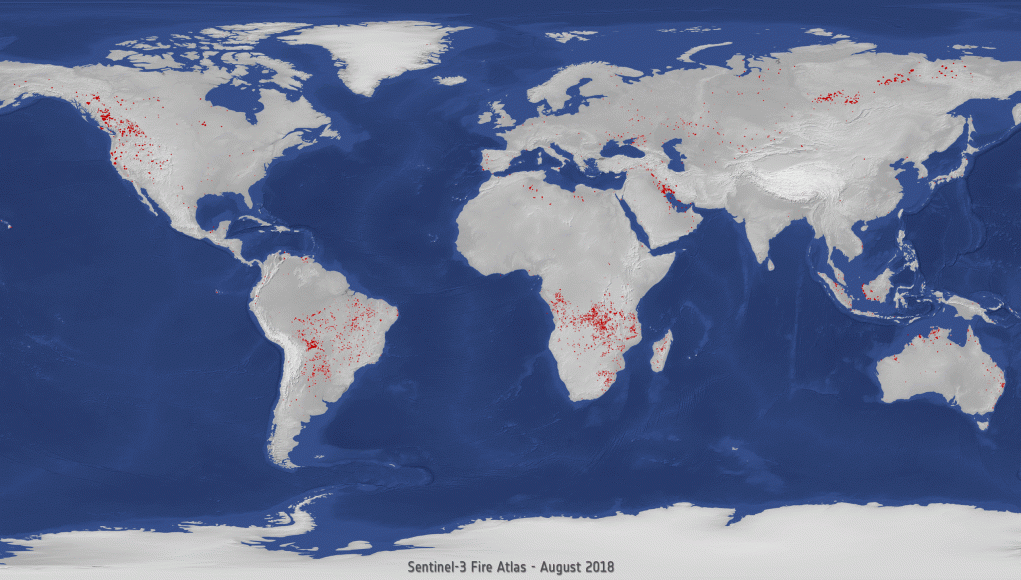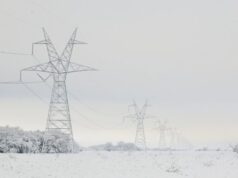Wildfires have been making headlines again this month, with multiple fires burning in Lebanon and California, but these are just some of the many fires 2019 has seen. Fires in the Amazon sparked a global outcry this summer, but fires have also been blazing in the Arctic, France, Greece, Indonesia as well as many other areas in the world.
Data from the Sentinel-3 World Fire Atlas shows that there were almost five times as many wildfires in August 2019 compared to August 2018, but a detailed analysis reveals precisely where these fires have been occurring—most of which were in Asia.
The Copernicus Sentinel-3 mission recorded 79,000 fires in August this year, compared to just over 16,000 fires detected during the same period last year. These figures were achieved by using data from the Sentinel-3 World Fire Atlas Prototype, which is also able to provide a breakdown of these fires per continent.
The data reveals 49 percent of fires were detected in Asia, around 28 percent were detected in South America, 16 percent in Africa, and the remaining were recorded in North America, Europe and Oceania.
Working like thermometers in the sky, the sensors on satellites measure thermal infrared radiation to take the temperature of Earth’s land surfaces. This information is used to detect and monitor the heat emitted by the fires.
Find your dream job in the space industry. Check our Space Job Board »
Using its two dedicated fire channels, the Sentinel-3 World Fire Atlas uses a simplified operational version derived from Wooster et al. 2012 in order to identify all active fires at night.
Data gathered are used to plot the number of fires occurring monthly. The number of input images from Copernicus Sentinel-3A satellite were around the same from one year to the other.
Even if the atlas cannot pick up all fires due to satellite overpass constraints and cloud coverage, it is statistically representative from one month to the other and from one year to the other.
ESA’s Olivier Arino comments, “We have never seen an increase of wildfires of this kind since the ATSR World Fire Atlas was created in 1995.”
Quantifying and monitoring fires is important for the ongoing study of climate because they have a significant impact on global atmospheric emissions, with biomass burning contributing to the global budgets of greenhouse gases, like carbon dioxide.
One of the biggest problems during and after fires is obtaining an overall view of the fires evolution and potential damage. With fires seen from space, Earth observation is also being used to detect and monitor the active spots over affected areas.
The prototype product and algorithm were presented at the remote sensing of forest fire EARSeL conference in Rome on 3 October 2019.
Provided by European Space Agency
More information: Olivier Arino et al. Global night-time fire season timing and fire count trends using the ATSR instrument series. Science Direct (2019). https://doi.org/10.1016/j.rse.2011.05.025
Image: Global fires detected in August 2018 compared to August 2019. The Sentinel-3 World Fire Atlas recorded 79 000 wildfires in August 2019, compared to just over 16 000 fires during the same period in 2018. Credit: contains modified Copernicus Sentinel data (2019)Credit: ESA on ONDA Copernicus DIAS











